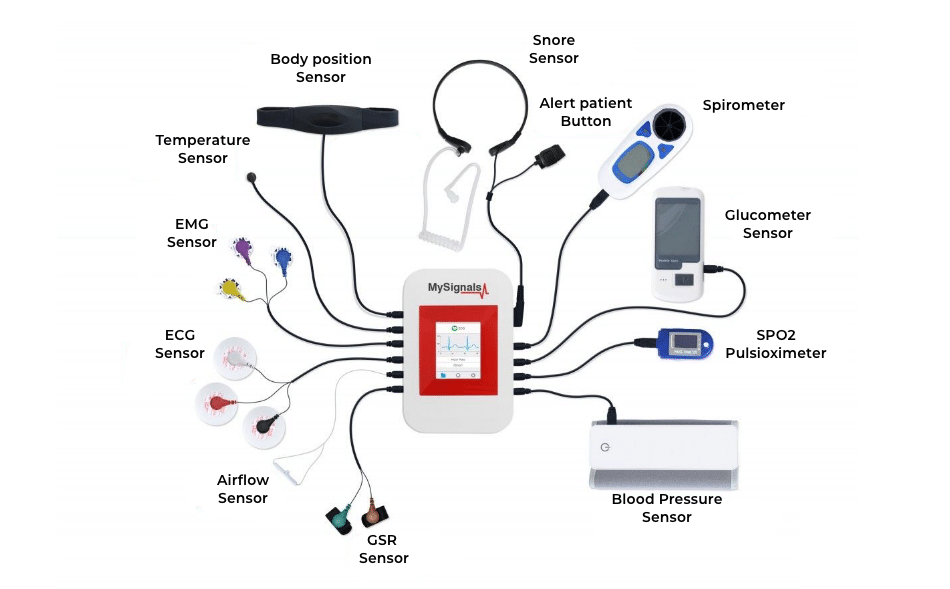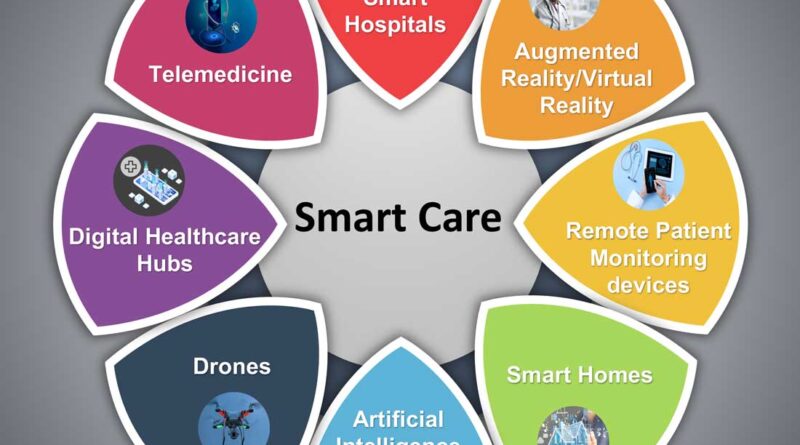Smart Healthcare System-2024
Smart Healthcare System
More than just a group of sensors and gadgets, a smart healthcare system is an all-encompassing approach to treatment that prioritizes patient-provider communication, proactive monitoring, and tailored interventions. These systems allow healthcare providers to provide prompt and focused interventions while empowering patients to take control of their health through the seamless integration of wearable technology, remote monitoring tools, and digital health platforms.

The Internet of Things (IoT) is the backbone of a smart healthcare system because it allows medical devices, sensors, and backend systems to seamlessly connect and communicate with one another. Real-time monitoring of vital signs, medication adherence, and lifestyle behaviors is made possible by this integrated network, which enables early diagnosis of health issues and preemptive actions to prevent consequences.
The creation of a complete and efficient platform for remote patient monitoring and customized healthcare delivery is achieved via the integration of multiple technologies and components inside a smart healthcare system.
Furthermore, given the massive volume of healthcare data created by smart devices and patient interactions, big data analytics is essential for deriving useful insights. Healthcare professionals can provide individualized care plans and clinical decision support by gaining important insights into patient health status, illness development, and treatment efficacy through the analysis of patterns, trends, and correlations found in this data.
By providing predictive analytics, risk stratification, and intelligent automation of repetitive processes, artificial intelligence significantly enhances the capabilities of smart healthcare systems. Healthcare professionals can take proactive measures to improve patient outcomes by utilizing machine learning algorithms that can recognize patterns that may indicate potential health hazards or deviations from usual behavior.
Smart healthcare systems not only improve clinical care but also increase patient satisfaction and participation by providing virtual care options, individualized health analytics, and easy access to healthcare services.
Patients can readily contact their care team, receive educational materials, and take part in remote consultations using mobile applications, web portals, and telemedicine platforms. This lowers barriers to healthcare access and encourages proactive self-management.
Follow our Digiknowledge.co.in page for the latest updates about bikes, cars, sports, lifestyle, and many more.
This is a detailed description of the steps involved in creating a smart healthcare system:
- Determine requirements and goals:
List the main goals of the smart healthcare system, including improving patient outcomes, cutting costs, and increasing patient experience.In defining the system’s requirements, take into account aspects such as regulatory compliance, security, interoperability, and scalability.
- Sections of Hardware:
To keep an eye on various health indicators, such as blood pressure, glucose levels, and heart rate, choose the right sensors, actuators, and personal medical devices (PMDs). Make sure that these gadgets are connected to and compatible with the IoT platform.
- Platform for IoT:
Create or choose an Internet of Things platform that is capable of safely gathering, processing, and storing data from a range of medical equipment.
Implement device management, interoperability, and data transfer protocols. Make sure you have strong security procedures in place to safeguard patient information and adhere to HIPAA standards, which include various medical devices.
- Data management and analytics:
Make use of big data technology to organize and examine the vast amount of medical data that the system generates. Use machine learning techniques to discover anomalies, provide individualized healthcare recommendations, and do predictive analytics.
For scalable and affordable data processing and storage, take advantage of cloud computing infrastructure.
- User Experience and Interface:
Create user-friendly interfaces for medical professionals and patients alike.
Give patients easy-to-use mobile applications and dashboards so they can interact with medical experts, check their health data, and receive notifications. Provide access to patient data so that medical professionals may keep an eye on patients’ conditions and take appropriate action.
- Integration with the healthcare ecosystem:
Connect the smart health system to the current telemedicine platforms, electronic health record (EHR) systems, and healthcare IT infrastructure.
To promote information sharing and continuity of care across various healthcare settings, make sure there is smooth interoperability.
- Ongoing Assessment and Enhancement:
Use measures like clinical results, patient happiness, and efficiency indicators to track the smart healthcare system’s performance.In order to pinpoint areas that need improvement, get input from patients, healthcare professionals, and other stakeholders. Based on actual use and changing healthcare requirements, iterate over the system’s functionality and design.
- Regulatory Compliance and Ethics:
Assure adherence to pertinent healthcare laws, rules, and guidelines, including the General Data Protection Regulation (GDPR), which protects patient privacy and security.Respect patient autonomy, openness, and informed consent as fundamental ethical precepts while gathering and using health data.
By taking these actions and making use of the most recent technological developments, a smart healthcare system may transform patient care by offering proactive, individualized, and easily available medical services.
In addition to enhancing clinical treatment, smart healthcare systems also boost patient engagement and satisfaction by offering convenient access to healthcare services, personalized health data, and virtual care alternatives.
Through mobile applications, web portals, and telemedicine platforms, patients can easily communicate with their care team, obtain instructional materials, and participate in remote consultations. This promotes proactive self-management and reduces obstacles to healthcare access.
What are smart healthcare cards?
Information on test results and vaccination history can be shared with organizations via SMART Health Cards. They might also have the capacity to exchange and keep additional health data in the future.
How do smart cards protect healthcare information?
Secure storage and encryption of a patient’s private health information is possible with smart cards that have embedded microcontrollers. Aside from restricting access to approved medical personnel, hospitals, and doctors, they can also manage who else has access to the stored data.
What are the goals of smart healthcare?
The goals of smart healthcare are to better inform patients about their health, assist them in handling some emergency circumstances on their own, and enhance their overall experience. Reducing treatment costs, remotely monitoring patients, and making the most use of the resources that are available are further benefits.
What are some examples of smart healthcare devices?
Devices in the first step that send health information to a PMD include pacemakers, motion detectors, and artificial retinas. In order to monitor the patient’s health, these PMDs are either externally or internally implanted into their body.
How does AI use in healthcare increase speed and accuracy?
To help medical practitioners make precise and timely diagnoses, artificial intelligence (AI) algorithms evaluate data from medical imaging tests, including MRIs, CT scans, and X-rays.
What is the purpose of a smart healthcare system?
Wearable technology and the Internet of Things are two examples of the technologies that smart healthcare systems employ to preserve and gather patient data. Disease detection, patient record generation, and remote patient monitoring are just a few of the applications that can benefit from this data.




